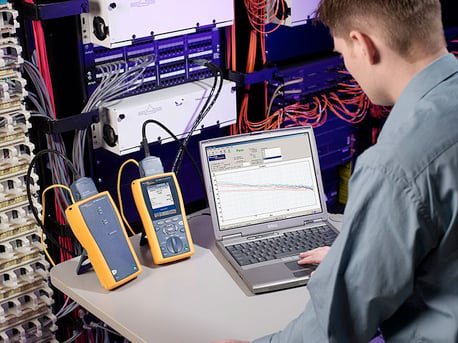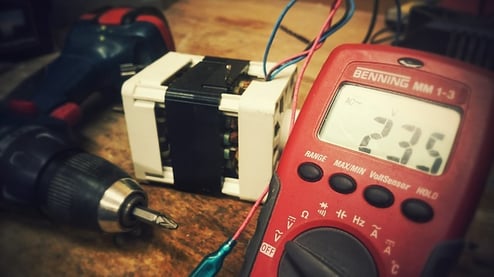Metering equipment, such as light loggers, temperature loggers, and AC current loggers can be very useful tools and sometimes necessary in the world of energy efficiency consulting. They can provide useful data on how equipment is operating and performing. I have written about metering in previous blog posts including one called “EM&V Metering: Right Place, Right Time, Right Duration” where I described the importance of identifying the correct way of deploying meters. In this post I am going to discuss the importance of verifying that meters or loggers are working correctly even before a metering plan is developed or the devices are deployed, as well as the importance of ensuring that the correct sensors are chosen for the application.
The Right CT for the Correct Range

The first example looks at selecting CT’s (Current Transformers) to use when metering AC current or power. The CT’s typically have useable ranges labeled either on the CT’s themselves, or in the technical documentation for the CT’s. It is commonly known that you need to select a CT large enough for the load on which it will be installed, but a specification that can often go over looked is the minimum range of the CT. Outside of these useable ranges the data has to be considered unreliable. It is important to verify the expected minimum operating amperage of a load to be sure that this minimum amperage is within this useable range. Not all CT’s are built the same, so the ranges differ depending on manufacturer and model.
Double-check Loggers for Accuracy
It is also important to check the accuracy of meters just as you would other test equipment or sensors. If you gather months’ worth of data, but it is not accurate, the data is useless and all your efforts are wasted. This can be particularly important when trying to analyze a process (e.g. an air handling unit’s [AHU] performance). In the AHU example, you have placed temperature loggers in the return air (RA), mixed air (MA), outside air (OA) and supply air (SA) ducts. If two of these loggers have temperature readings that are 3°F different from each other it could throw any calculations from the data off significantly. Double checking loggers for accuracy before heading into the field is always a good decision to ensure that you will be getting reliable data.
Calibrate Early, Calibrate Often

Following my point about accuracy above, it’s important to ensure that your metering equipment stock is continually kept in calibration. Often this involves sending equipment back to the dealer or manufacturer annually or per the specs of the equipment. Granted, this can be a time consuming and costly task, but again, your metering equipment is useless if you are not collecting accurate data with calibrated tools. Make sure you budget for this expense and your firm appoint a “champion” who is responsible for ensuring equipment is routinely sent out for calibration on a rolling basis, so you don’t have every piece out at the same time.
Metering equipment is one of the most valuable tools in an energy engineer’s tool box, but these tools can be useless if not properly maintained and used. If these few steps are not followed it can cause a very large headache and sometimes a large amount of wasted time.

